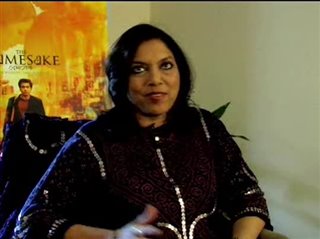

But the movie reminds us that the main character of the story really isn’t Gogol at all. In the novel, it may seem, according to Western constructs, that Gogol, Ashoke’s son, is our protagonist. and is based on the book, explores this very rift with the rich visuals and fine casting Nair has come to be known for. Mira Nair’s wondrous film, which came out 16 years ago, on March 9, 2007, in the U.S. Jhumpa Lahiri’s debut novel The Namesake (2003) explores the friction between what we are born with - a name, a culture, and parents we do not choose - and what we make of it. So he applies to a graduate program, winning a full ride, and leaves for America. He begins to wonder if there is wisdom in Mr. KEYWORDS Mira Nair, Indian diaspora, migration, globalization, sound in cinema An extraordinary tale of an ordinary Bengali immigrant family in America, Mira.


Ashoke thanks Gogol for saving his life, for it is a crumpled piece of the story that allows rescuers to find him. He lives at home for a year, healing, relying on others to take care of him. A train derailment leaves several ribs broken and puts screws in his hips and legs. Only a few minutes later, Ashoke’s entire world is upended. He’s too engrossed in Nikolai Gogol’s short story “The Overcoat.” The world is out yonder, across the seas, in places like America and England. Ghosh, who has just returned from London after living there for two years, taking a train from Calcutta to Jamshedpur is not seeing the world. “My grandfather always said this is what books are for: to travel without moving an inch,” a young Ashoke Ganguli (Irrfan Khan) tells his fellow, talkative train passenger, Mr.


 0 kommentar(er)
0 kommentar(er)
